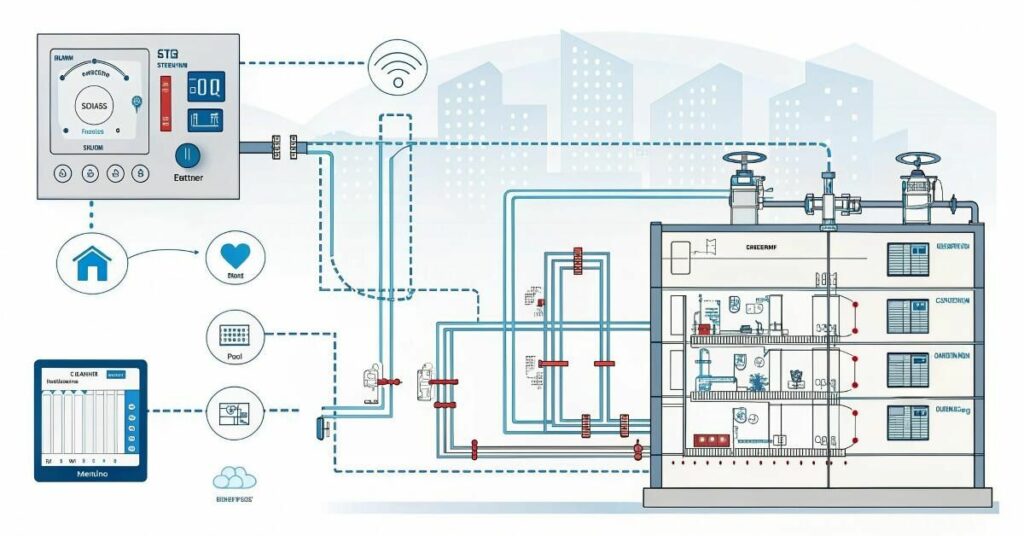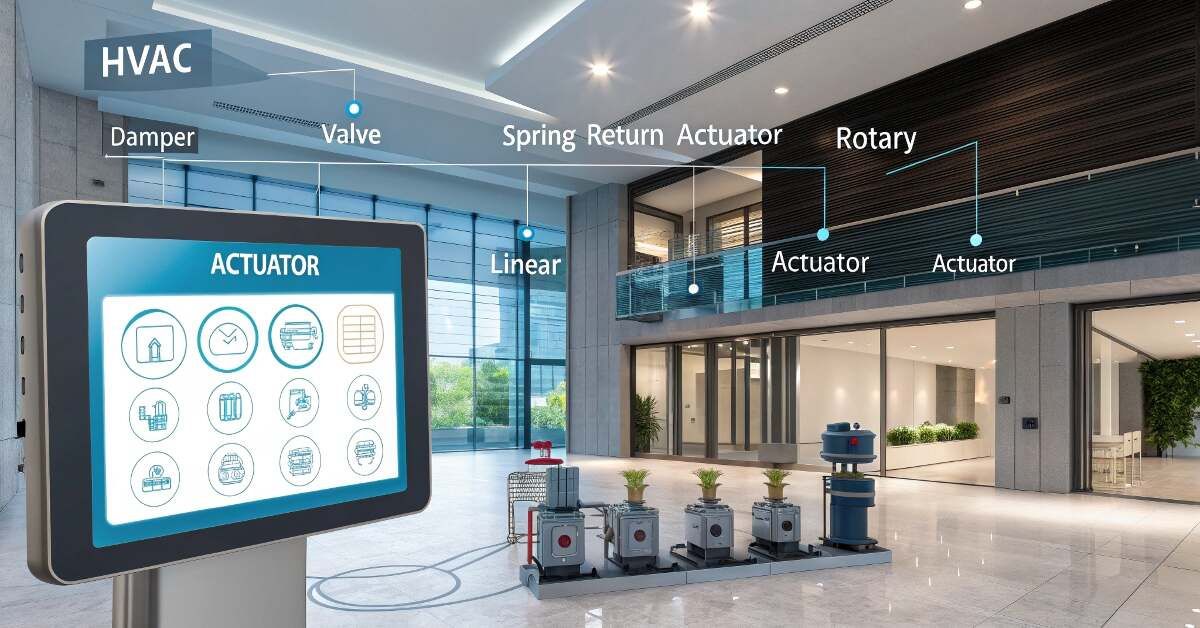HVAC actuators play a key role in helping buildings use less energy. They ensure that the air, temperature and equipment are moved with complete accuracy. If used properly, they help you waste less and achieve more without extra work.
They help to improve the comfort inside homes and buildings. Because actuators can change settings in real time, the temperature and air quality remain stable. As a result, people inside feel less uncomfortable with temperature and everyone is happier.
As well as making a building more comfortable, these smart devices make it operate more efficiently. They improve the system’s reaction time, block failures and contribute to efficient automation. When you have suitable actuators, your processes are both smoother and smarter.
Table of Contents
ToggleUnderstanding HVAC Actuators in BMS

Airflow, temperature and ventilation are all controlled with exact movements by HVAC actuators. They operate dampers, adjust valves and make adjustments to equipment. As a result, your home stays comfortable and you use less energy.
When integrated with a Building Management System (BMS), actuators become even smarter. They make it possible to observe systems in real time and to adjust them automatically. As a result, the system responds quickly to changes and keeps everything running efficiently.
Key Role of Damper Actuators

Damper actuators manage the flow of air in a building. They use dampers to direct air where it needs to go in the home. It keeps the air temperature comfortable and prevents hot or cold areas in any room. A climate is balanced inside when the air is distributed equally.
They make it possible to use less energy. Real-time adjustments of airflow by these actuators ensure that systems are not overworked. As a result, your monthly energy costs will be lower and you’ll produce less waste.
- Change the airflow to suit the space you are in.
- Try not to use your heating or cooling system too often.
- Adjust your behavior quickly when the temperature changes.
- You can enhance system performance with fewer efforts required.
- Use less energy on average
Importance of Valve Actuators
The actuators in the system control the flow of hot and chilled water through the coils. Valves are used by the system to ensure the right amount of water goes where it’s needed. Because of this, your heating and cooling systems can run with less energy wasted.
They make systems react more quickly to changes in temperature. The temperature inside a building is maintained evenly by the real-time control of water flow by valve actuators. As a result, the system is more stable, adaptable and trustworthy.
Function of Spring Return Actuators
Spring return actuators keep HVAC systems safe when the power goes out. As soon as the power is cut, they automatically move to a safe place. If you react promptly, you avoid harm to your system and maintain its safety.
They help to minimize the number of times people must conduct manual checks. Because they perform reliably, actuators help ensure operations are smoother. As a result, equipment breaks down less often, there is less downtime and the equipment is better maintained over time.
Benefits of Non-Spring Return Actuators
In changing conditions, non-spring return actuators give reliable and responsive control. Because they can change positions easily, they are great for systems requiring precise air or water flow. As a result, the system can keep working well even as requirements change.
For best results, these actuators should be used where the power is steady. No matter what, they always deliver the same outcomes and do not move to a different level. Having fewer parts, they are able to operate dependably for a long time in controlled places.
Impact of Rotary and Linear Actuators

The operation of dampers and valves is smooth due to rotary actuators. They are designed so that parts can open or close when required. Moving smoothly helps the system work better and keeps equipment lasting longer.
Linear actuators use a straight movement to regulate pressure and flow. They ensure high accuracy which is essential for systems that must be well controlled. They are dependable because, whether you’re turning up the air or water, they act smoothly and responsibly.
Actuator Type | Main Function | Best Use Case |
Rotary Actuator | Smooth turning for valves and dampers | Airflow and temperature control |
Linear Actuator | Precise straight-line movement | Pressure and flow regulation systems |
How These Actuators Boost Overall BMS Efficiency?
Current actuators help predict when maintenance is needed by detecting issues in advance. They notice when the system changes and let you know before there is a problem. Doing this keeps the equipment from breaking down and saves on repairs.
They also allow us to use energy more wisely. When they only use systems when required, they avoid wasting materials and lower their emissions. With this, we are able to design buildings that are environmentally friendly and reach sustainability goals.
FAQ’s
What role do HVAC actuators play in improving BMS performance?
The BMS is able to work efficiently and reliably because HVAC actuators control airflow, temperature and how the system runs.
How do damper actuators contribute to energy savings?
They automatically change the amount of airflow depending on what’s needed, helping to use less energy and keep the climate comfortable.
Why are valve actuators essential in HVAC systems?
They make sure water temperature to the heating and cooling coils is suitable for quick and steady indoor temperatures.
Conclusion
The efficiency and reliability of building systems depend a lot on HVAC actuators. Every type is important, whether it’s controlling air, water or ensuring the system is safe. With their partnership, we can achieve healthier indoor spaces that use less energy.
Actuators with smart control and immediate response help the BMS function more effectively. They help increase comfort, save money and make equipment last longer. Eventually, they result in smarter, greener and simpler-to-manage buildings.

